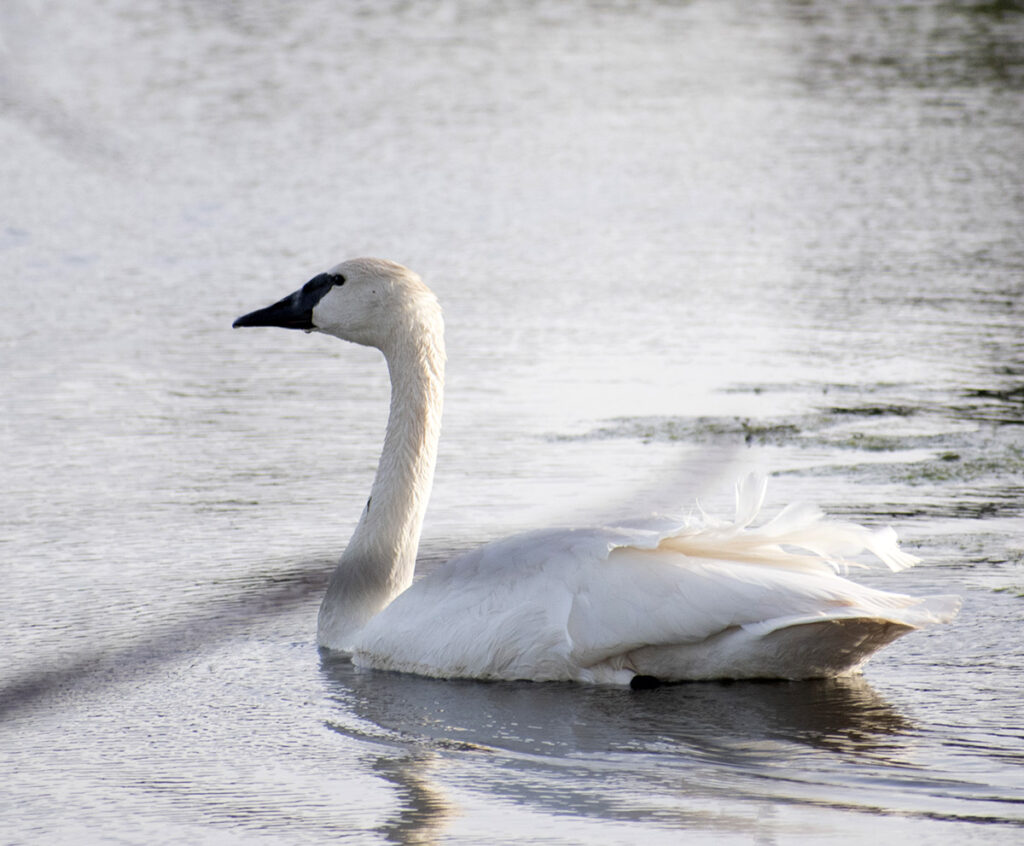by Grace Huffman

It’s a bit late in the year to write about this bird as most have gone north, but I just saw one for the first time last week! This was one of my bucket list species (E.B. White’s The Trumpet of the Swan was one of my favorite books growing up), which made it even more exciting to see.
Trumpeter Swans are very large white waterfowl, and one of 2 swans native to North America, along with Tundra Swans. Mute Swan individuals are often escaped or released from captivity, with very few naturalized populations in the US. They nest in various parts of Alaska, Canada & the northern half of the contiguous 48 states. They build large mounds of vegetation, which the female then shapes around her body to form a bowl to lay 4-6 eggs in. Once the babies hatch, they usually leave the nest in about 24 hours and can swim & feed themselves.
Their winter range is as sporadic as their summer range. Here in Oklahoma you can typically only find them in the winter, usually at places like Tallgrass Prairie or ponds around Bartlesville. Last February’s cold snap brought them all the way to the OKC metro, but the winter weather prevented me from leaving my house for almost a week, and by the time I could get out they were long gone. The weather also proved to be a hindrance on a trip up to NE Oklahoma this January, where ponds they would often be sighted in were frozen over due to cold temps. I had given up on seeing one this year at all until one was sighted about half an hour north of OKC in Logan County last week. Sure enough, it was there! I was quite surprised that it let us take great photos of it before swimming away & across the pond. I was quite surprised that one was this far south this late in the year. Wonder what led it here?
Trumpeter Swans are currently a low concern species, and are a great conservation success story. They were driven to near extinction almost 100 years ago, but as of 2005 number over 34,000 and are continuing to increase & expand their range. Still, threats to these gorgeous birds include human disturbance of nests and young, habitat loss, & lead poisoning to name a few. Hopefully next winter a few more come south and you are able to see one!
References: allaboutbirds.org
